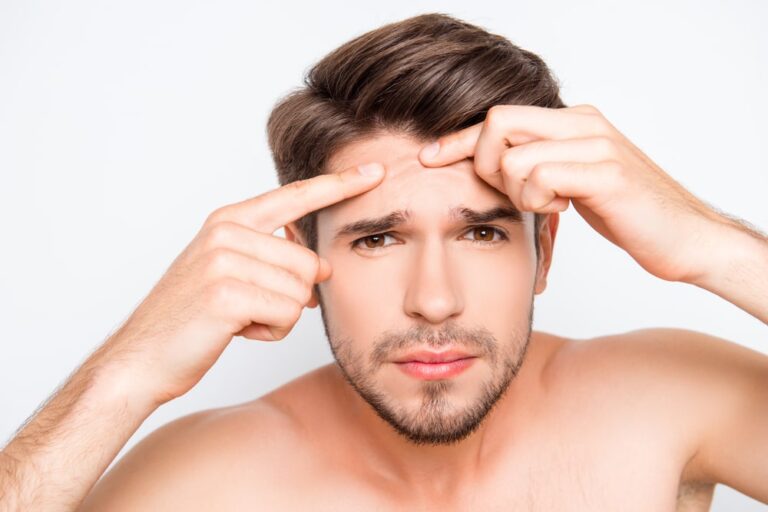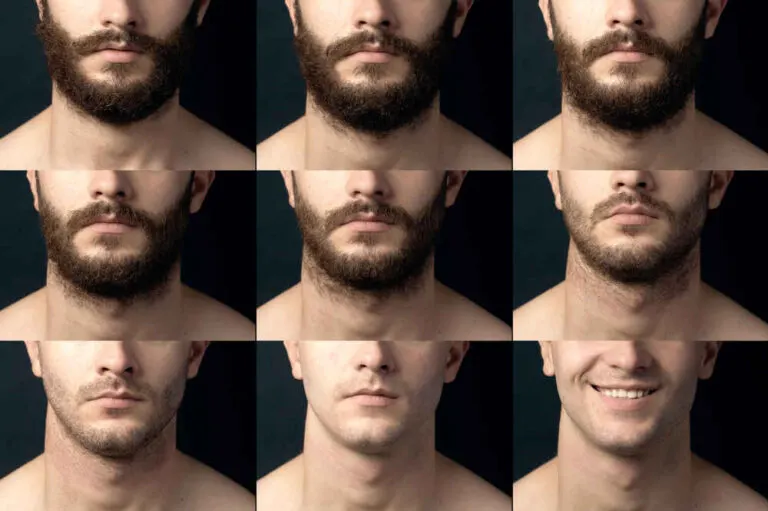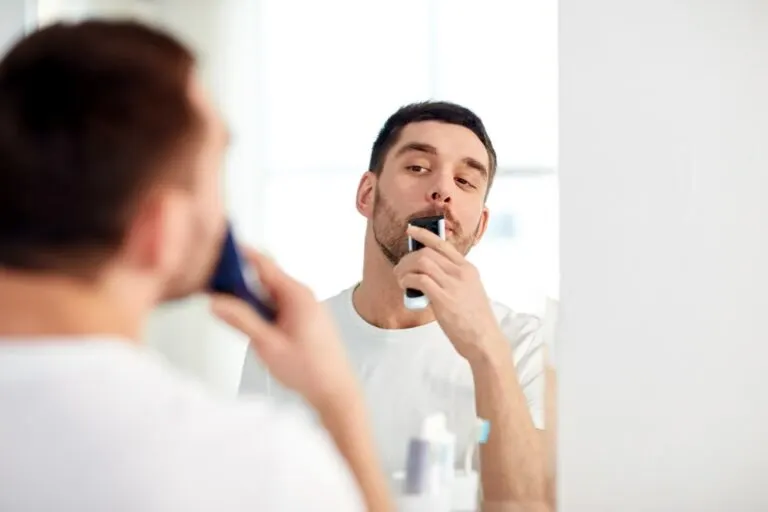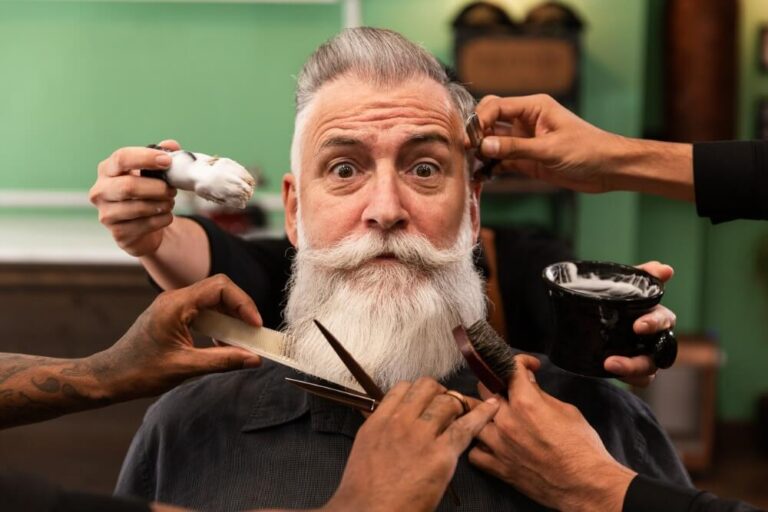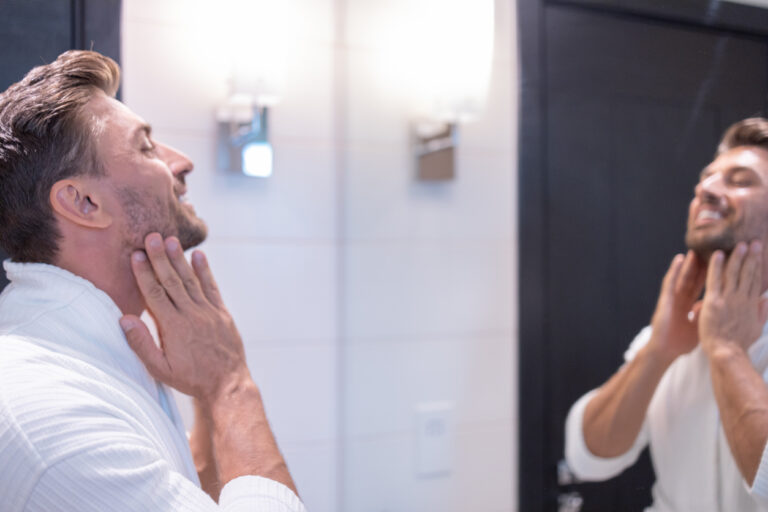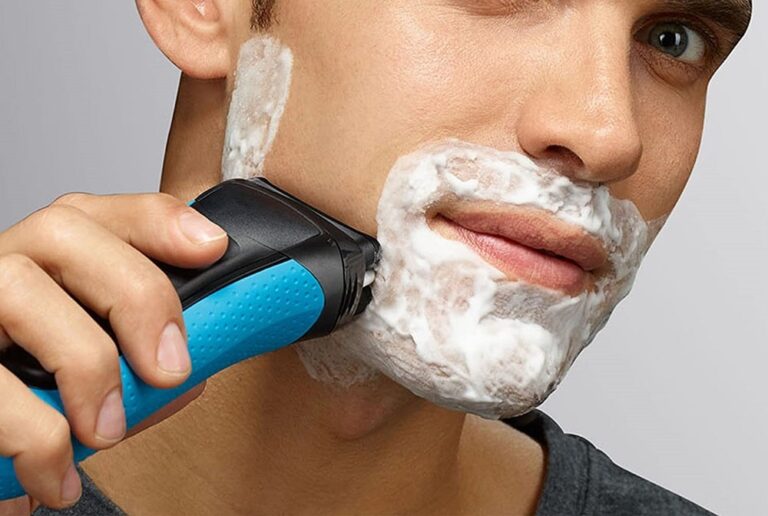What Happens When You Shave Your Beard? Should You Do It?
At some point in your life, you may have contemplated shaving off your beard. It could be for a change in style or simply to cool off during the summer months. But before you take that razor to your face, it’s important to understand what happens when you shave your beard.
In this article, we’ll guide you through the effects of shaving on your skin and facial hair. By the end of this article, you can make an informed decision about whether or not to shave your beard.
What Happens When You Shave Your Beard
When you shave your beard, there are both positive and negative effects. It can provide a clean and polished appearance, but can also lead to skin irritation and ingrown hairs. It may also result in a loss of natural protection provided by facial hair. Let’s take a look at the positive and negative effects of shaving your beard.
Positive Effects
There are various reasons why someone may choose to shave their beard. While some people prefer to keep a beard, others may find it more beneficial to go for a clean-shaven look. But whatever might be the reason for shaving, here are some of the positive effects of shaving your beard:
1. Clean and Neat Appearance
One of the most significant positive effects of shaving is the clean and neat appearance it provides. A clean-shaven face can give you an image of sophistication, and attention to detail. This can be especially important in social settings where first impressions matter.
2. Professional Look
Depending on your job, having a well-groomed beard can be acceptable. However, some professions, such as those in the military or healthcare, may require employees to be clean-shaven for safety or hygiene reasons. When you shave your beard for a job interview, you get a more professional look instantly.
3. Improved Health and Hygiene
Beards can be a breeding ground for bacteria and germs. This is especially true if you don’t keep it clean. Shaving your beard can improve your overall hygiene and make it easier to keep your face clean. Plus, you’ll be less likely to get food stuck in your facial hair.
If you your skin that is prone to acne, shaving your beard can be a game-changer. Trapped dirt and oil can cause acne breakouts and other skin irritations. Shaving regularly can help to keep your skin clean and healthy.
4. Enhanced Sensory Experience
You can feel more sensations on your skin after shaving your beard, such as the texture of fabrics or the warmth of sunlight. Additionally, you can also enjoy the sensation of a freshly-shaved face or the coolness of a post-shave aftershave or moisturizer.
5. More Youthful Appearance
Shaving your beard can take years off your appearance. A clean-shaven face can make you look younger and more energetic. If you’re starting to notice signs of aging, consider shaving your beard to look more youthful.
6. Better Relationship or Dating Life
Some women may prefer a clean-shaven appearance in their partners. When you shave your beard, your chances of attracting a romantic partner get better.
Negative Effects
In addition to the potential benefits of shaving, there are also some drawbacks of shaving your beard that might be enough of a reason you shouldn’t shave your beard. Now let’s take a look at some of the potential downsides of shaving, including its impact on your appearance, skin health, and more.
1. The Itchy Feeling
The most common thing every time you feel immediately after shaving your beard is itching. Shaving removes the top layer of skin along with your facial hair, leaving your skin more vulnerable to irritation, dryness, and other issues. This is especially true if you have sensitive skin.
2. Razor Burn And Allergic Reaction
This condition makes the skin inflamed and irritated after shaving, resulting in a red, itchy, and sometimes painful rash. Using a dull razor, applying too much pressure, or shaving against the grain may cause razor burn. If you have a skin allergy, shaving with an electric razor can cause acne breakouts.
3. Ingrown Hairs
Another downside of shaving is the risk of ingrown hairs. If you have curly or coarse hair. These hairs can become trapped beneath the skin’s surface. This can lead to painful, itchy bumps that can become infected if left untreated.
4. Reduced Sun Protection
Facial hair can provide some level of sun protection, especially if it’s thick or long. When you shave, you remove this protective barrier, leaving your skin more exposed to the sun’s harmful rays. This can increase your risk of sunburn, skin damage, and even skin cancer over time.
5. Limited Styling Options
While shaving can provide some styling versatility, it does have limitations. For example, if you prefer a longer beard or mustache, shaving may not be the best option for you. In this case, you may need to consider alternative grooming methods to achieve your desired look.
How To Minimize Skin Irritation After Shaving Your Beard?
Skin irritation is a common issue that can occur after shaving your beard. Fortunately, there are several steps you can take to minimize the risk of skin irritation and keep your skin looking and feeling healthy.
1. Exfoliate Before Shaving
Exfoliating your skin before shaving can help to remove dead skin cells and unclog pores, which can reduce the risk of ingrown hairs and skin irritation. Use a gentle scrub or exfoliating tool to prepare your skin for shaving.
2. Use A High-Quality Razor
A high-quality razor can help to reduce the risk of nicks, cuts, and razor burns. Make sure your razor is sharp and clean before using it, and consider using a razor with multiple blades to get a closer shave with fewer passes.
3. Shave With The Grain
Shaving against the grain can increase the risk of skin irritation and ingrown hairs. To minimize the risk of irritation, try shaving with the grain of your hair growth instead. This will reduce the risk of nicks and cuts, and help to minimize irritation.
4. Use Shaving Cream or Gel
Lubricate your skin with shaving products to reduce the risk of razor burn and skin irritation. Choose a product that’s designed for your skin type, and apply it generously to your beard before shaving.
5. Rinse Your Skin With Cool Water
After shaving, rinse your skin with cool water to help soothe any irritation or inflammation. Cool water can help to reduce redness and swelling, and can also help to close pores and prevent ingrown hairs.
6. Apply Aftershave
Aftershave helps to soothe your skin and reduce redness and inflammation. Look for an aftershave that is alcohol-free to avoid further irritation.
Finally, applying a moisturizer after shaving can help to soothe and hydrate your skin, reducing the risk of dryness and irritation. Choose a moisturizer that’s designed for your skin type, and apply it generously to your face and neck after shaving.
Should You Shave Off Your Beard?
The decision to shave your beard is a personal one and depends on individual preferences and circumstances. It’s important to consider both the advantages and drawbacks before making the decision.
Shaving can provide you with a cleaner and more polished appearance, but can also lead to skin irritation and a loss of natural protection provided by facial hair. So, it’s up to you to weigh the pros and cons and decide if shaving your beard is the right choice for you.
Does Shaving Everyday Increase Beard Growth?
There is a common myth that shaving every day can increase beard growth, but this is not true. Shaving does not affect the beard growth rate or its thickness.
Shaving your beard can create the illusion of thicker hair because the hair that grows back after shaving is blunt, rather than tapered like natural hair.
So, Now you should be able to make a final decision on shaving your beard considering what happens after shaving your beard.

